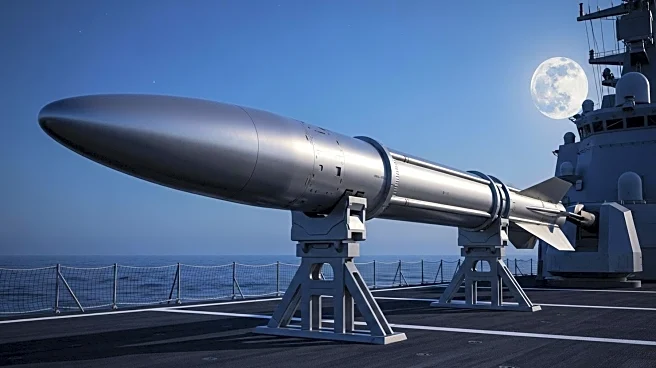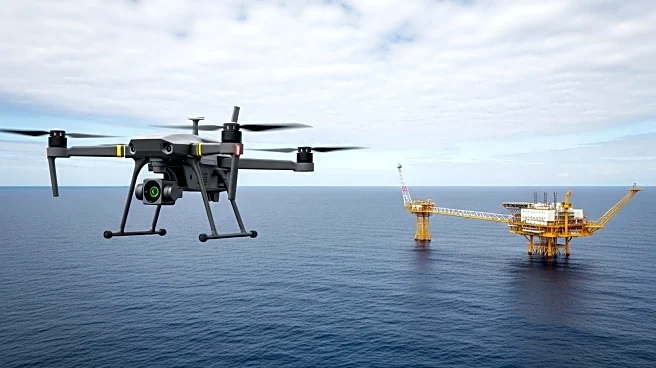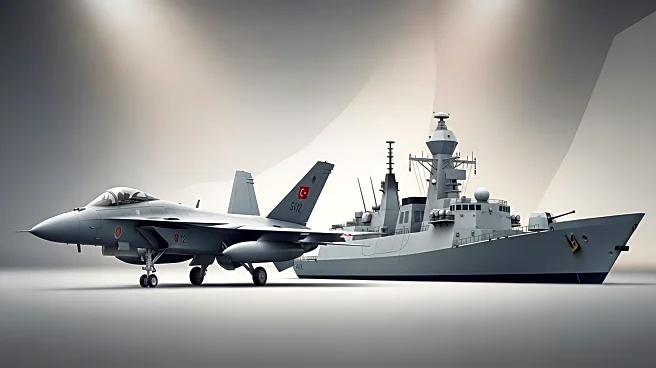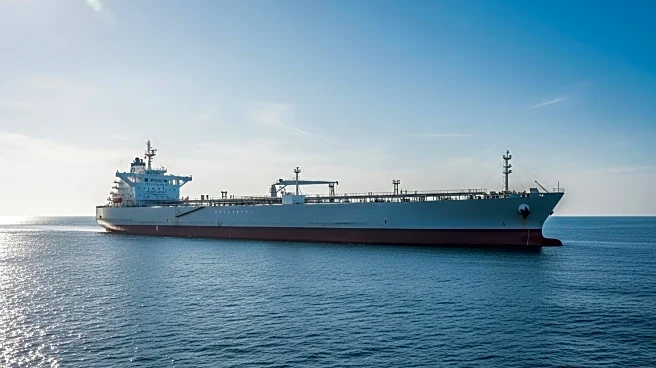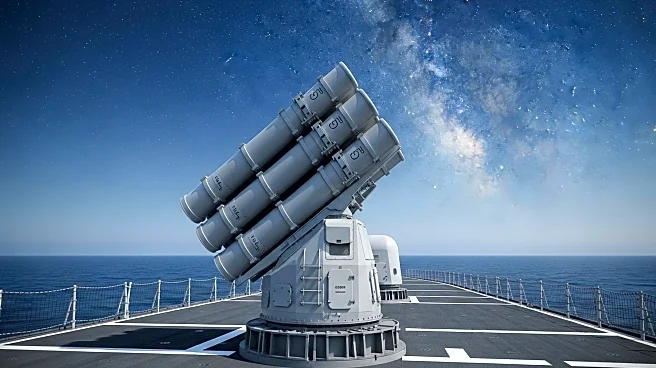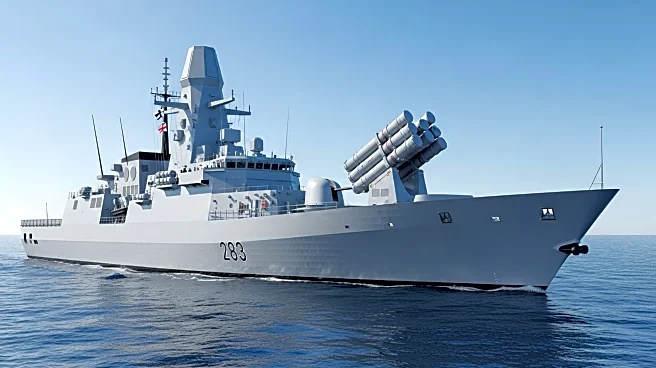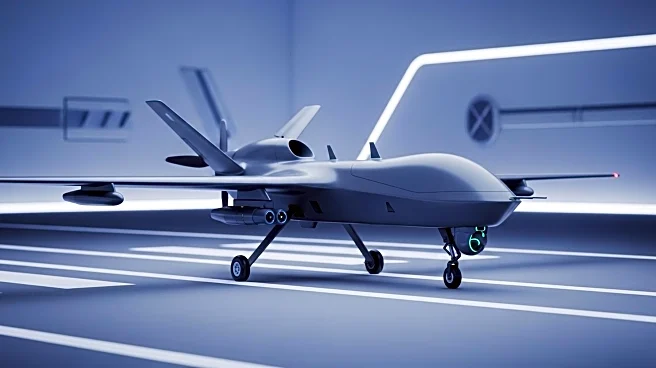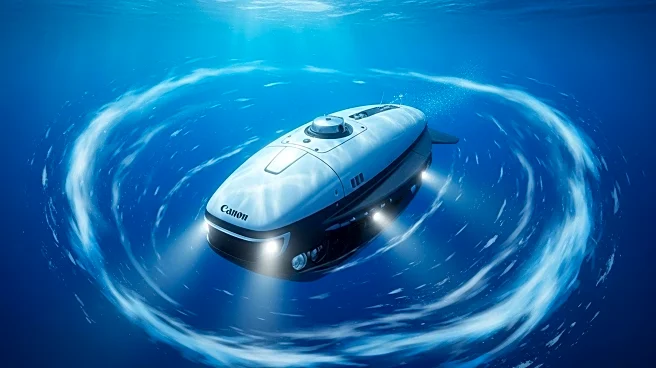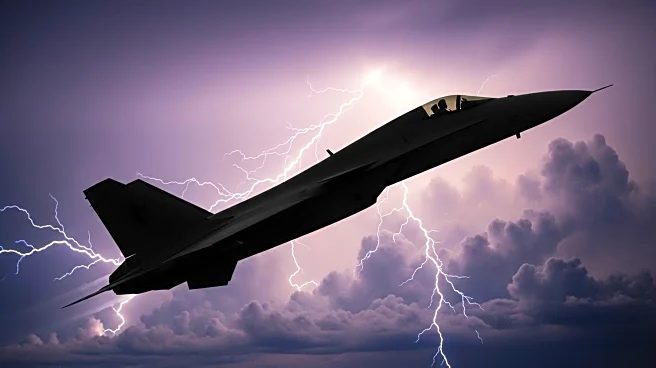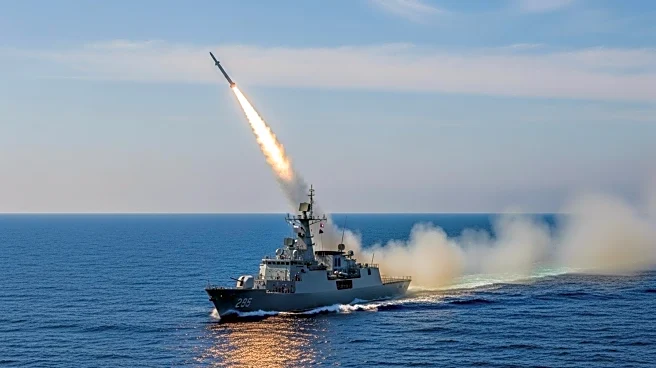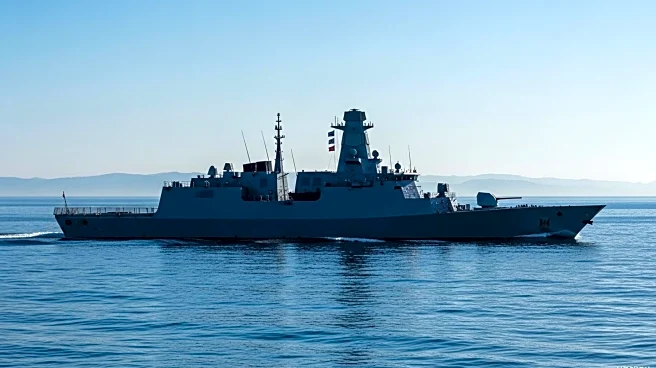What is the story about?
What's Happening?
The UK Royal Navy has declared the initial operating capability of the MBDA Sea Venom anti-ship missile, allowing it to be used operationally. This missile is now equipped on the Leonardo AW159 Wildcat HMA2 maritime helicopter, enhancing the Royal Navy's combat power. The Sea Venom provides precision, reach, and flexibility, enabling the Royal Navy to effectively neutralize threats across maritime, coastal, and land domains. The missile's deployment was part of Operation 'Highmast', a mission to the Indo-Pacific led by the HMS Prince of Wales flagship, with Wildcats armed with Sea Venom spread across the Carrier Strike Group.
Why It's Important?
The deployment of the Sea Venom missile marks a significant upgrade in the Royal Navy's offensive capabilities, allowing for more effective engagement with a wide range of threats. This development enhances the UK's ability to protect its interests and those of its allies, particularly in strategic regions like the Indo-Pacific. The Sea Venom's precision and range provide a tactical advantage, ensuring the Royal Navy can maintain a strong deterrent presence and respond swiftly to emerging threats. This capability is crucial for maintaining security and stability in international waters.
What's Next?
With the Sea Venom now operational, the Royal Navy is expected to integrate this capability into its broader strategic framework, potentially influencing future naval engagements and defense strategies. The successful deployment may encourage further investment in advanced missile technologies, enhancing the UK's defense posture. Additionally, allied nations may seek to collaborate or adopt similar technologies to bolster their own maritime security.
AI Generated Content
Do you find this article useful?
